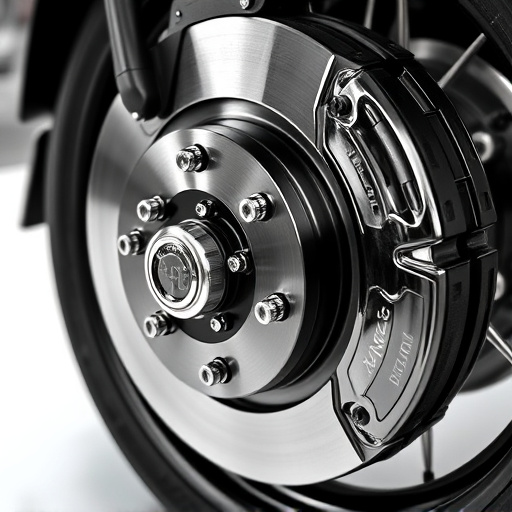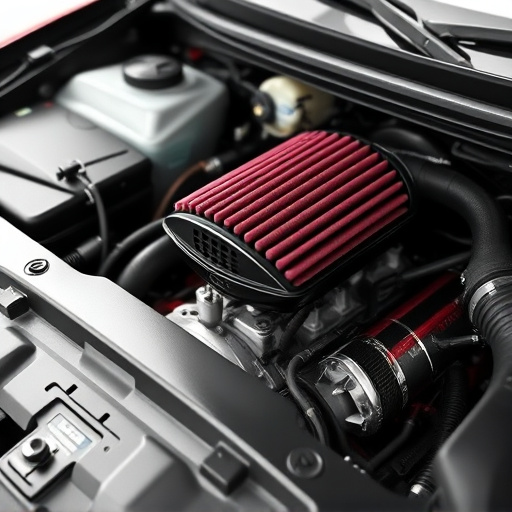Intercooler Piping: Unlocking Efficiency and Power in Forced Induction
Intercooler piping is a key upgrade for vehicles with forced induction systems, optimizing engine pe…….
Intercooler piping, a specialized component within thermal management systems, has emerged as a critical element in various industries, playing a pivotal role in enhancing efficiency and performance. This intricate network of pipes facilitates the transfer of heat away from critical components, ensuring optimal functioning under demanding conditions. In this comprehensive article, we embark on a journey through the world of intercooler piping, exploring its intricacies, global impact, technological innovations, and its ever-evolving role in shaping industrial landscapes.
Intercooler piping refers to the system of tubes and connectors designed to circulate a coolant fluid between an intercooler (a heat exchanger) and various components within a mechanical or automotive system. Its primary function is to manage and regulate temperature, ensuring sensitive parts operate within safe thermal limits.
Core Components:
Historically, intercoolers were primarily used in automotive applications, particularly in high-performance vehicles, to manage the heat generated by powerful engines. Over time, the technology has evolved and found its way into diverse fields, including industrial machinery, power generation, and even data centers. The demand for efficient thermal management has driven continuous innovation in intercooler piping design and materials.
Intercooler piping’s influence is a global phenomenon, with varying adoption rates across different regions. Here’s an overview of its international impact:
| Region | Market Growth (2020-2025) | Key Drivers | Challenges |
|---|---|---|---|
| North America | 7.5% | High demand from automotive and data center industries | Strict environmental regulations regarding coolant fluids |
| Europe | 8.2% | Increasing focus on sustainable cooling solutions | Variability in regional climate requiring region-specific piping designs |
| Asia-Pacific | 9.1% | Rapid industrialization and adoption of advanced technologies | Limited availability of skilled labor for complex installations |
| Middle East & Africa | 6.3% | Growing power generation and infrastructure projects | Extreme weather conditions posing challenges to pipe integrity |
| South America | 5.8% | Expanding automotive manufacturing base | Economic instability affecting investment in thermal management systems |
Trends Shaping the Industry:
The global intercooler piping market is a dynamic sector, driven by several economic factors:
Technological breakthroughs have significantly contributed to the evolution of intercooler piping:
The development of intercooler piping is guided and influenced by various policies and regulations:
Despite its numerous benefits, intercooler piping faces several challenges:
Proposed Solutions:
Case Study 1: High-Performance Automotive Racing
A leading racing team implemented a custom intercooler piping system to optimize engine cooling for their hypercar. The challenge was to manage extreme temperatures while maintaining lightweight construction. Engineers designed a compact, modular piping network using advanced aluminum alloys and integrated sensors for real-time temperature monitoring. This innovative system not only enhanced the car’s performance but also set a new standard for efficient thermal management in racing vehicles.
Case Study 2: Data Center Cooling Revolution
A global cloud service provider faced the challenge of cooling large server farms efficiently while minimizing energy consumption. They adopted an intercooler piping system utilizing water as the coolant and integrated heat exchangers with PCMs. This sustainable approach reduced the carbon footprint and significantly lowered operating costs, setting a benchmark for eco-friendly data center cooling solutions.
Case Study 3: Power Plant Thermal Management
A new generation power plant required advanced thermal management systems to handle high-temperature, high-pressure conditions. Engineers designed a custom intercooler piping network with enhanced heat transfer capabilities using nanofluids. This innovation improved the overall efficiency of the power plant and reduced environmental emissions.
The future of intercooler piping is filled with exciting possibilities, driven by technological advancements and evolving industry needs:
Intercooler piping has evolved from a niche application to a vital component in numerous industries, playing a pivotal role in thermal management. Its ability to enhance efficiency, improve performance, and reduce environmental impact is undeniable. As the world navigates the challenges of rising temperatures and increasing energy demands, intercooler piping technology will continue to revolutionize cooling systems, driving innovation and sustainability across sectors.
Q: What are the primary benefits of using intercooler piping?
A: Intercooler piping offers enhanced thermal management, allowing components to operate at optimal temperatures. It improves efficiency, reduces energy consumption, and extends equipment lifespan by preventing heat-related damage.
Q: How do intercooler pipes differ from traditional cooling systems?
A: Unlike conventional cooling systems that rely on air or direct water flow, intercooler piping utilizes a network of tubes to circulate coolant fluid, providing more controlled and efficient heat transfer. This design allows for better temperature regulation and flexibility in application.
Q: Are there any environmental concerns associated with intercooler piping?
A: While traditional coolants can have detrimental environmental impacts, modern intercooler piping systems use eco-friendly options like biodegradable fluids and recycled pipes. Many manufacturers also focus on minimizing the overall carbon footprint through energy-efficient designs.
Q: How does technology contribute to the future of intercooler piping?
A: Technological advancements such as nanofluids, PCMs, 3D printing, and IoT integration will drive the future of intercooler piping. These innovations enhance performance, enable customization, and facilitate smart thermal management solutions.

Intercooler piping is a key upgrade for vehicles with forced induction systems, optimizing engine pe…….

Intercooler piping, a critical component in high-performance vehicles, enhances engine cooling effic…….